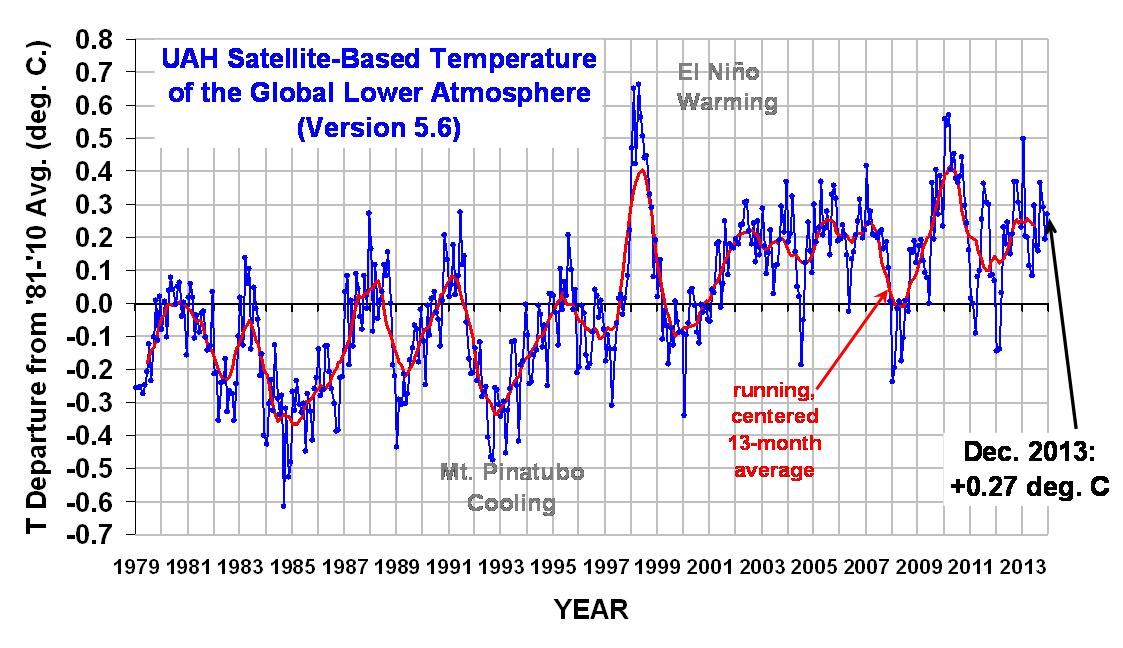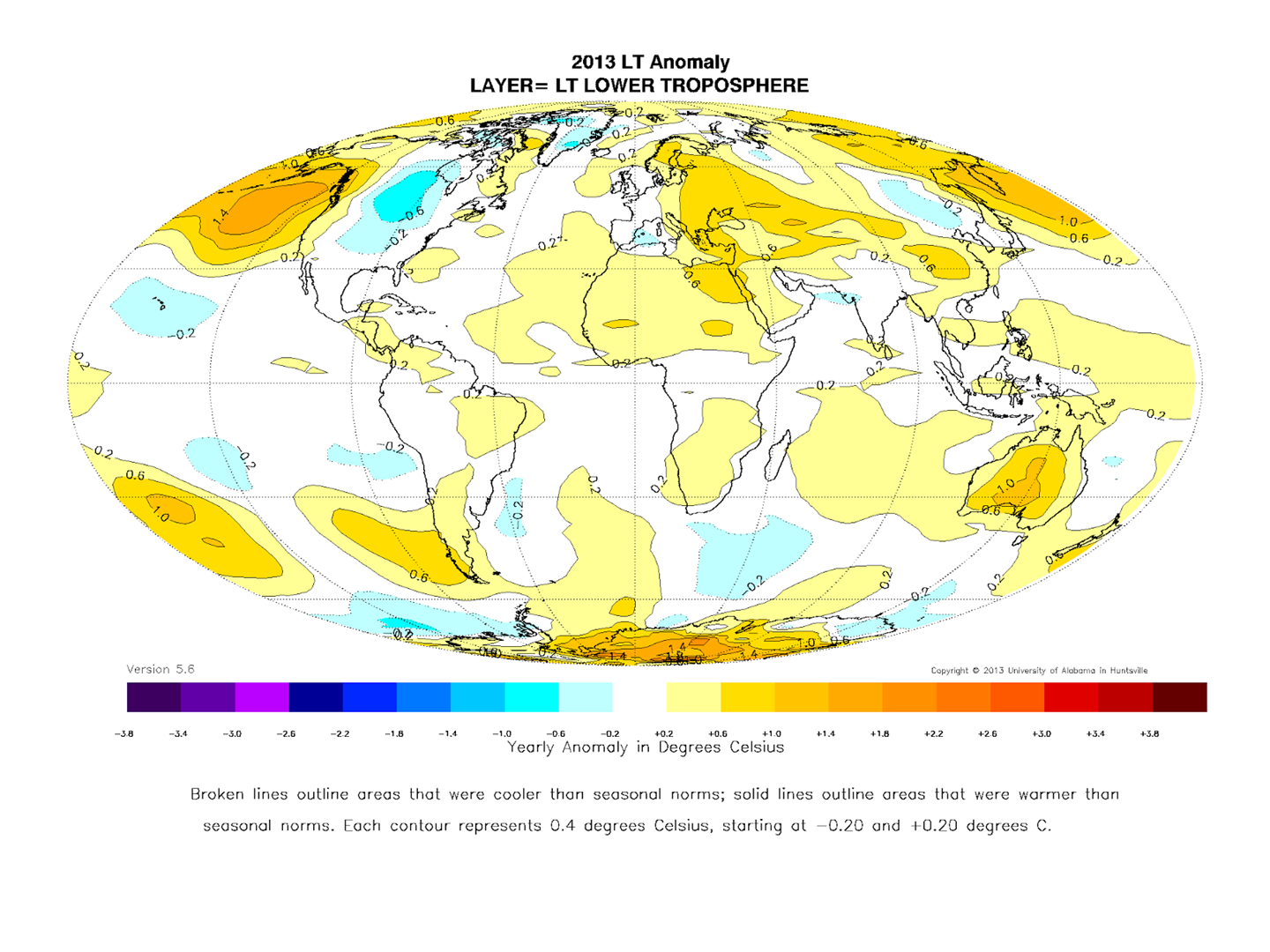The Version 5.6 global average lower tropospheric temperature (LT) anomaly for December, 2013 is +0.27 deg. C, up from +0.19 deg. C in November (click for full size version):

The global, hemispheric, and tropical LT anomalies from the 30-year (1981-2010) average for the last 12 months are:
YR MON GLOBAL NH SH TROPICS
2013 01 +0.496 +0.512 +0.481 +0.387
2013 02 +0.203 +0.372 +0.033 +0.195
2013 03 +0.200 +0.333 +0.067 +0.243
2013 04 +0.114 +0.128 +0.101 +0.165
2013 05 +0.082 +0.180 -0.015 +0.112
2013 06 +0.295 +0.335 +0.255 +0.220
2013 07 +0.173 +0.134 +0.211 +0.074
2013 08 +0.158 +0.111 +0.206 +0.009
2013 09 +0.365 +0.339 +0.390 +0.189
2013 10 +0.290 +0.331 +0.250 +0.031
2013 11 +0.193 +0.160 +0.226 +0.020
2013 12 +0.265 +0.273 +0.257 +0.057
Here’s the global lower tropospheric temperature anomaly map for 2013:

Other global images are archived here.
The global average anomalies by year (2013 was the 4th warmest since satellite monitoring started in 1979):
1979 -0.170
1980 -0.008
1981 -0.045
1982 -0.250
1983 -0.061
1984 -0.353
1985 -0.309
1986 -0.244
1987 +0.013
1988 +0.012
1989 -0.207
1990 -0.022
1991 +0.020
1992 -0.289
1993 -0.245
1994 -0.108
1995 +0.013
1996 -0.076
1997 -0.049
1998 +0.419
1999 -0.056
2000 -0.061
2001 +0.107
2002 +0.218
2003 +0.187
2004 +0.108
2005 +0.260
2006 +0.186
2007 +0.204
2008 -0.009
2009 +0.209
2010 +0.398
2011 +0.130
2012 +0.170
2013 +0.236
Popular monthly data files (these might take a few extra days to update):
uahncdc_lt_5.6.txt (Lower Troposphere)
uahncdc_mt_5.6.txt (Mid-Troposphere)
uahncdc_ls_5.6.txt (Lower Stratosphere)

 Home/Blog
Home/Blog



